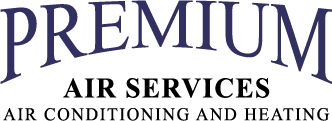
You shouldn’t have to give up comfort or drain your wallet to keep your home at a pleasant temperature during the summer.
But what is the right temperature, exactly? We discuss ideas from energy experts so you can determine the best temp for your family.
Here’s what we suggest for the most energy-efficient setting for air conditioning in Tomball.
Recommended Thermostat Settings for Summer
Most families find using the thermostat at 72-73 degrees is ideal. However, if there’s a huge difference between your inside and exterior temps, your cooling bills will be bigger.
These are our recommendations based on the U.S. Department of Energy (DOE) and ENERGY STAR®.
While at home: 78 degrees. While that appears warm, there are approaches you can keep your house cool without having the AC on frequently.
Keeping windows and window treatments down during the day keeps cold air where it belongs—indoors. Some window coverings, such as honeycomb shades or plantation shutters, are made to deliver extra insulation and improved energy efficiency.
If you have ceiling fans in your home, the DOE says you can increase thermostat temps about 4 degrees hotter without giving up comfort. That’s because they refresh with a windchill effect. Since they cool people, not spaces, shut them off when you leave a room.
If 78 degrees still appears too warm at first glance, try conducting a test for approximately a week. Get started by raising your thermostat to 78 degrees while you’re at your house. Then, steadily decrease it while adhering to the advice above. You may be surprised at how cool you feel at a hotter temperature setting.
While away: 88 degrees. There’s no reason to keep the air conditioning on all day while your house is empty. Turning the temp 7–10 degrees higher can save you anywhere from 5–15% on your electrical expenses, according to the DOE.
When you arrive home, don’t be tempted to put your thermostat colder than 78 to cool your house more rapidly. This isn’t productive and often leads to a higher cooling expense.
A programmable thermostat is a helpful approach to keep your temp under control, but it requires setting programs. If you don’t utilize programs, you might forget to increase the set temperature when you take off.
If you’re looking for a hassle-free solution, consider buying a smart thermostat. This thermostat links with your phone, so it realizes when you’re at home and when you’re gone. Then it instinctively adjusts temperature settings for the best savings. How much exactly? An estimated $180 yearly on heating and cooling, according to ENERGY STAR.
Another perk of getting a smart thermostat? You can use your phone to monitor and change temperature settings from just about anywhere.
While sleeping: Around 70 degrees. While ENERGY STAR recommends 82 degrees, that could be unbearable for the majority of families. Most people sleep better when their sleeping space is cold, so that’s why the National Sleep Foundation suggests 60–67 degrees. But that might be too cool, depending on your pajama and blanket preference.
We recommend following an equivalent test over a week, putting your temp higher and slowly lowering it to pick the best setting for your residence. On cool nights, you could find keeping windows open at night and relying on a ceiling fan is a better solution than operating the AC.
More Ways to Use Less Energy During Hot Weather
There are additional ways you can save money on cooling bills throughout warm weather.
- Upgrade to an energy-efficient AC system. Central air conditioners only work for about 12–15 years and become less efficient as they get older. An upgraded air conditioner can keep your home comfier while keeping electricity expenses down.
- Set annual air conditioner tune-ups. Routine air conditioner maintenance keeps your system working properly and could help it work at greater efficiency. It can also help extend its life expectancy, since it allows pros to spot small problems before they cause a major meltdown.
- Put in new air filters often. Use manufacturer instructions for replacing your air filter. A dirty filter can result in your system short cycling, or run too often, and drive up your cooling.
- Check attic insulation levels. Almost 90% of residences in the U.S. don’t have proper insulation, according to the Insulation Institute. Most southern climates need 13–14” of attic insulation, while northern climates need 16–18”.
- Have your ductwork checked. Ductwork that has loosened over time can seep cool air into your attic, walls or crawl space. This can result in huge comfort problems in your house, including hot and cold spots.
- Seal openings, doors and windows. Keep hot air in its place by plugging openings. You can also caulk or weather strip doors to keep more cold air indoors.
Conserve More Energy During Hot Weather with Premium Air Services LLC
If you need to save more energy during warm weather, our Premium Air Services LLC professionals can provide assistance. Give us a call at 713-364-9957 or contact us online for extra details about our energy-saving cooling options.
